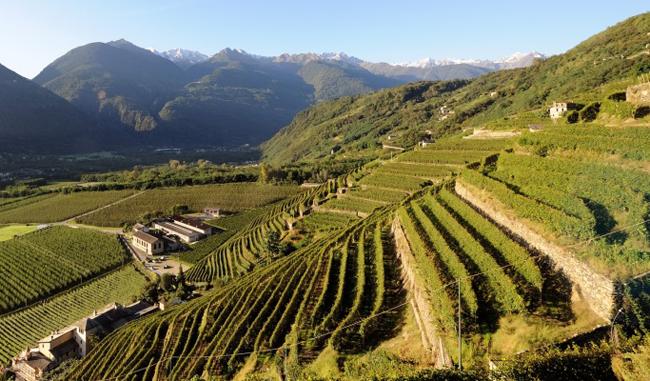In Italy, wine is made even in the most improbable places. One such place is Valtellina, a beautiful 40-kilometer wide valley north of Lake Como, in the province of Sondrio. Here, the vineyards have been built on mountain slopes, at an altitude of 2,500 feet.
It is quite a spectacular sight: dry stone walls support the terraced hillside vineyards built thousands of years ago to allow cultivation of the land (the winemaking tradition hails back to the 5th century).
Sheltered from the cold northern winds by the Retiche Alps, the vineyards are exposed to the sun all day. The sandy, silty soil retains the heat and releases it during the night to warm the vines. This allows the grapes to fully develop their flavors during the long growing season they need. The steep location of the vineyards makes mechanical harvesting difficult, so most vineyards are tended by hand, increasing costs and limiting production.
It is hard work to make wine in a similar environment, but the results make it worthwile. Four types of red wines are produced here from Nebbiolo grapes, known locally as Chiavennasca: Grumello, Sassella, Inferno (meaning, hell - the name reflects the steep gradient of the land and the high summer temperatures), and Valgella. The territory boasts two DOCGs, the more widespread Valtellina Superiore, aged a miminum of two years, and the Sforzato (meaning “strained”) di Valtellina, made using the appassimento method, which consists of laying harvested grapes on straw mats to dry for several months.
These intense, aromatic wines may not be very well-known – the Nebbiolo grape is usually associated with Piedmont – but I had the chance to taste them on a trip to Valtellina and I highly recommend them.
For more information, click here (in Italian).




